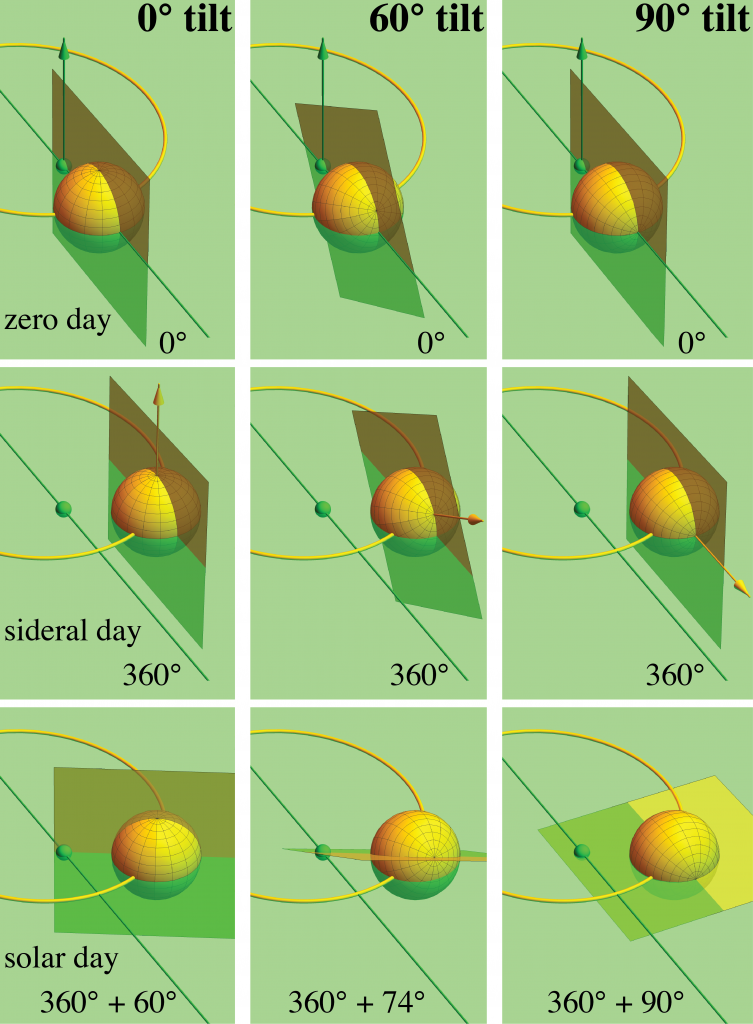The December solstice is the longest day of the year, despite being the northern hemisphere’s shortest daylight.
Earth’s sidereal day is the time to rotate 360° with respect to distant stars, about 23 hours and 56 minutes, and its solar day is the time between successive noons, about 24 hours. Earth’s obliquity (tilt) and revolution (orbit) require an extra rotation (spin) of about 4 minutes to go from noon to noon. Because Earth is coincidentally at perihelion (nearest sun and moving fastest) during the December solstice (maximum tilt), these effects combine to produce the longest solar day, about 24 hours and 30 seconds. (Clocks average the solar variation by recording mean solar time.)
In a discrete two-step approximation, the diagram illustrates the difference between solar and sidereal days for planets with 3 different tilts. From the first row to the second, the planets orbit the sun as they spin 360° (in the sense of the green right-handed arrow). From the second row to the third, the planets spin through extra angles (in the sense of the yellow right-handed arrow), so that the marked longitudinal planes again includes the sun. Tilted planets must spin further, taking extra time, to extend a sidereal day to a solar day.


Thanks, Mark! I enjoy reading your posts as well.